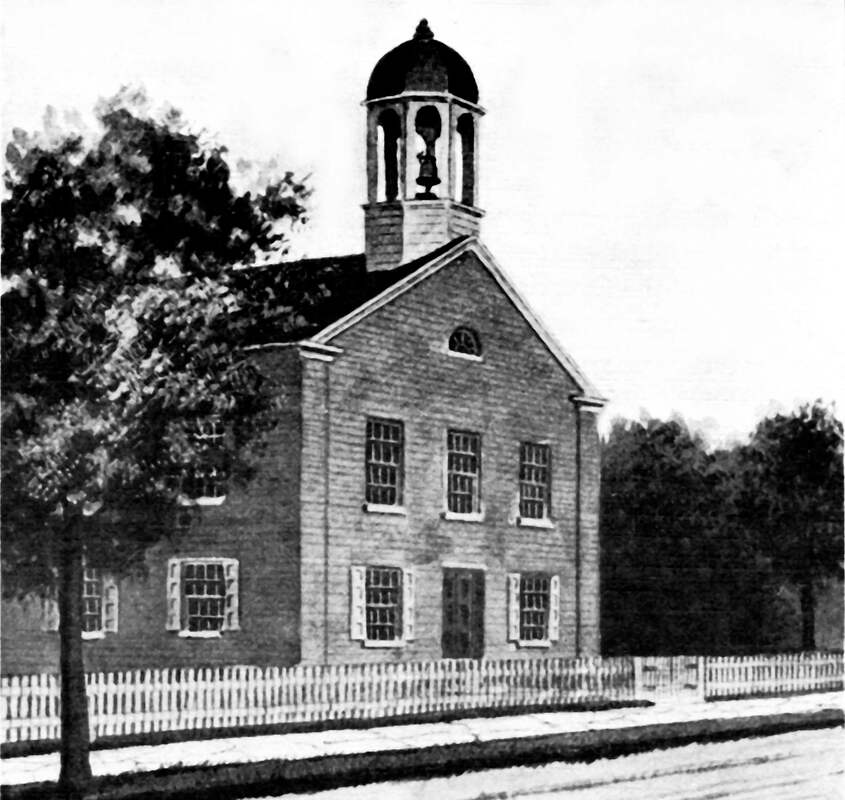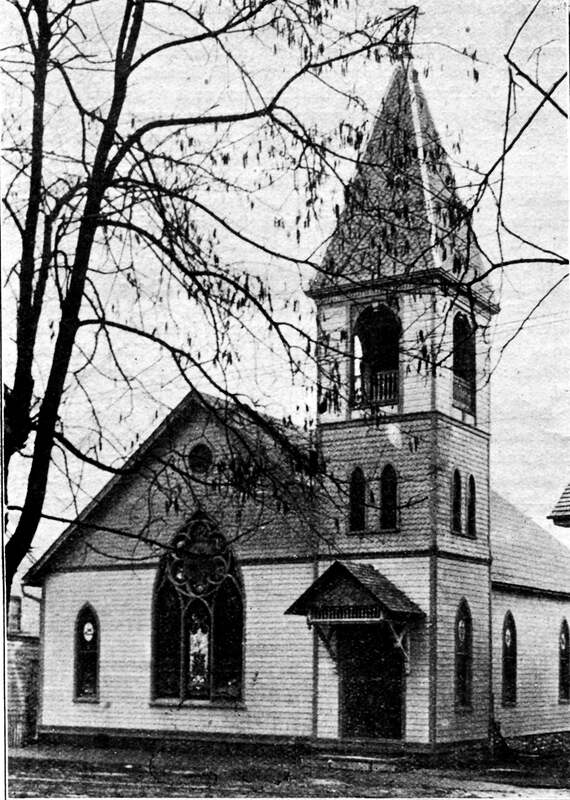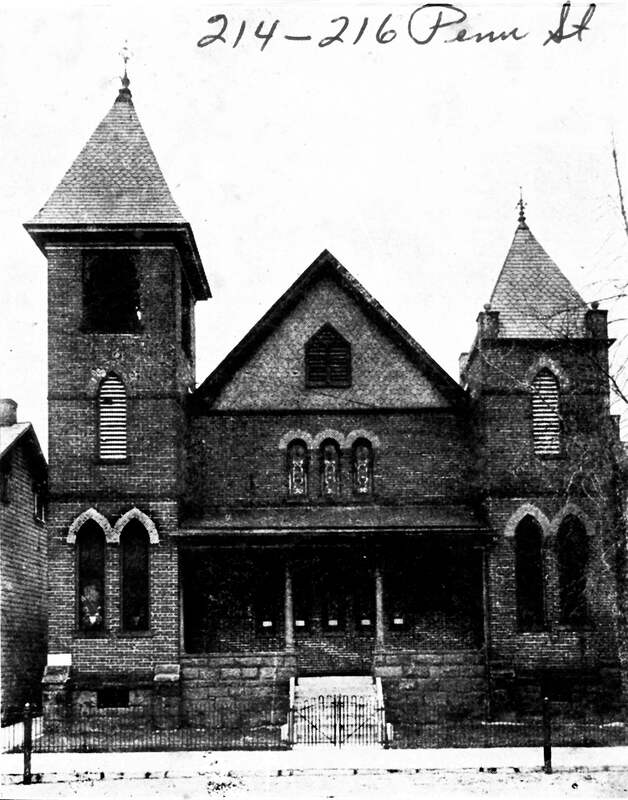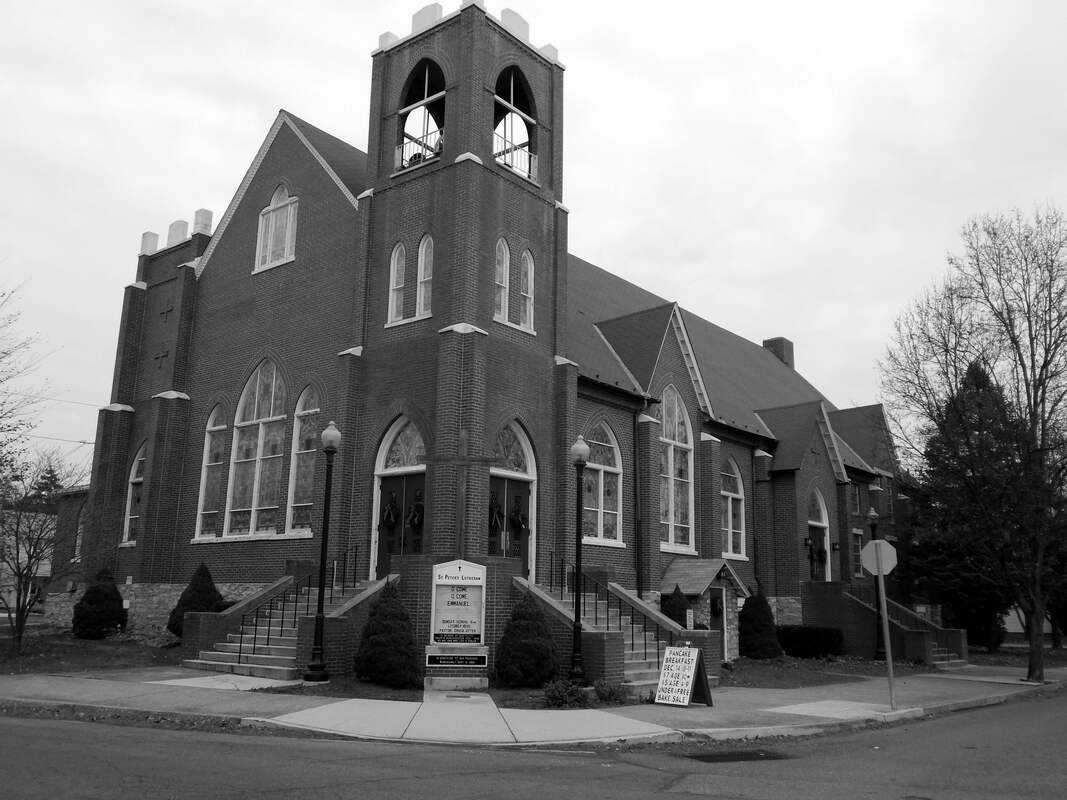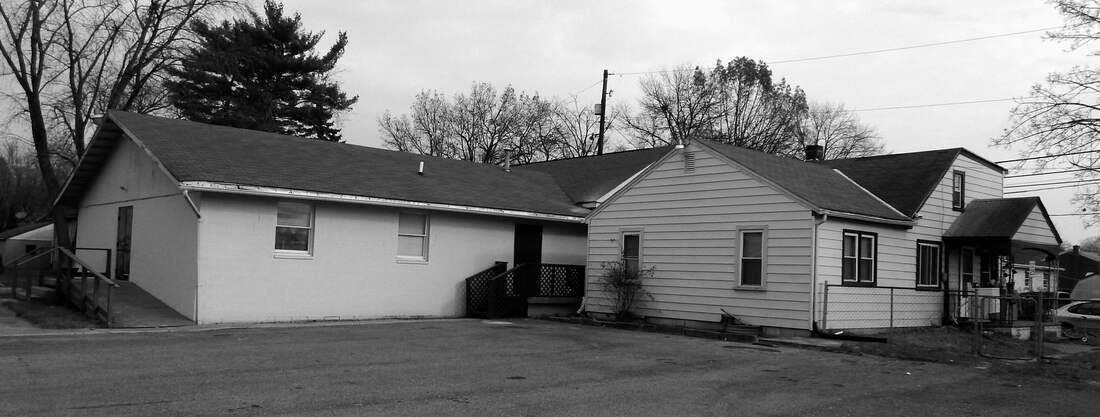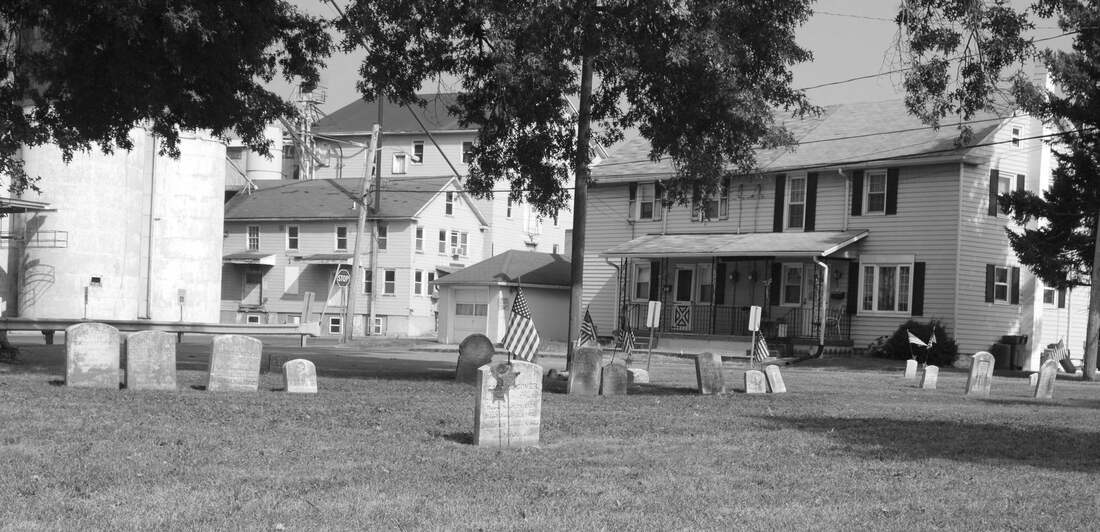Churches
United Methodist Church
The first church organized in Highspire was the United Brethren in Christ, the forerunner of today’s Highspire United Methodist Church. Its origin dates to 1793 or 1794 when Father John Neidig (1765-1844), founder of both Highspire and Oberlin United Brethren in Christ Churches, held services in his home on his 237-acre farm between Oberlin and Highspire. One of his converts and spiritual son was Rev. Jacob Roop Sr. (1782-1875), who lived on a neighboring farm. Neidig served as a minister of the gospel for 55 years and Roop for 61 years. Together, they would lead the local churches for many years.
In early 1842 a revival held in the old wood-frame schoolhouse on RailroadStreet resulted in many conversions. Due to the increased size of the congregation, a decision was made to build a house for the Lord at Highspire. The congregation continued to meet in the schoolhouse until the new church building was completed. Rev. Roop and his wife, Margaret, sold a lot with a 50-foot frontage on Second Street to Samuel Neidig, Jacob Nissley and Conrad Alleman, trustees of the United Brethren in Christ of Highspire, for a new church. The lot is the site of the present United Methodist Church. In December 1842 a beautiful, new colonial-style brick church building was dedicated for worship.
In early 1842 a revival held in the old wood-frame schoolhouse on RailroadStreet resulted in many conversions. Due to the increased size of the congregation, a decision was made to build a house for the Lord at Highspire. The congregation continued to meet in the schoolhouse until the new church building was completed. Rev. Roop and his wife, Margaret, sold a lot with a 50-foot frontage on Second Street to Samuel Neidig, Jacob Nissley and Conrad Alleman, trustees of the United Brethren in Christ of Highspire, for a new church. The lot is the site of the present United Methodist Church. In December 1842 a beautiful, new colonial-style brick church building was dedicated for worship.
This is a drawing of the original United Brethren in Christ Church, now the United Methodist Church, at 170 Second St. This two-story brick, colonial-style building was built in 1842. It was remodeled in 1879 adding Gothic-style windows on the second floor, and a tall spire. This building was razed in 1896 and a church was built in the same location.
In the 1870s there was a growing need for space to accommodate the Sunday school program. In 1879 the church was remodeled, with a more modern spire replacing the cupola, and gothic-style windows added on the second floor. Interior changes included a raised altar, chancel railing and a new pulpit platform.
In 1882 a large, nine-room parsonage was built on the southeast corner of Roop and Market streets on land donated by Dr. J. Warren Roop. The lot was part of a Highspire extension plan filed by Dr. Roop for the Market Square area in 1878. The land originally was part of Rev. Roop’s 121-acre farm. The parsonage is still in use today.
In the 1890s a new house of worship was planned to accommodate a growing congregation. The old church was razed and on Sunday, July 11, 1896, a cornerstone for the new church was laid. By December that year the entire structure was finished and dedicated. The auditorium had seating for more than 400 people. The Victorian-style stained-glass windows were designed and fabricated by C. Day Rudy of Harrisburg. With a few minor changes over the past 118 years, this is the same building used by the United Methodist Church today.
In 1882 a large, nine-room parsonage was built on the southeast corner of Roop and Market streets on land donated by Dr. J. Warren Roop. The lot was part of a Highspire extension plan filed by Dr. Roop for the Market Square area in 1878. The land originally was part of Rev. Roop’s 121-acre farm. The parsonage is still in use today.
In the 1890s a new house of worship was planned to accommodate a growing congregation. The old church was razed and on Sunday, July 11, 1896, a cornerstone for the new church was laid. By December that year the entire structure was finished and dedicated. The auditorium had seating for more than 400 people. The Victorian-style stained-glass windows were designed and fabricated by C. Day Rudy of Harrisburg. With a few minor changes over the past 118 years, this is the same building used by the United Methodist Church today.
This was the new United Brethren in Christ Church as it appeared when dedicated on Dec. 6, 1896. Note the boardwalk in front of the church with two hitching posts.
In 1906 remodeling was made necessary by the weakening of a roof timber. Three steel girders replaced wood timbers, and metallic walls and ceilings replaced plaster. The goal of a new Sunday school building was finally achieved when a Christian education building was dedicated in 1927 along with a new Möller pipe organ. The main Sunday school room with an original seating capacity of 600 was the largest gathering place in the community.
The latest renovations were completed in 2005 to make the church building handicapped-accessible in compliance with the Americans with Disabilities Act (ADA). They include all new restroom facilities, air conditioning, a remodeled social hall, additional youth classrooms and nursery and toddler facilities. A wheelchair lift in the narthex allows folks with disabilities to take part in activities in the social hall.
In 1946 the Evangelical and United Brethren in Christ churches merged to create the Evangelical United Brethren (E.U.B.) Church. In 1968 the Methodist and Evangelical United Brethren denominations merged to form the United Methodist Church.
The latest renovations were completed in 2005 to make the church building handicapped-accessible in compliance with the Americans with Disabilities Act (ADA). They include all new restroom facilities, air conditioning, a remodeled social hall, additional youth classrooms and nursery and toddler facilities. A wheelchair lift in the narthex allows folks with disabilities to take part in activities in the social hall.
In 1946 the Evangelical and United Brethren in Christ churches merged to create the Evangelical United Brethren (E.U.B.) Church. In 1968 the Methodist and Evangelical United Brethren denominations merged to form the United Methodist Church.
First Church of God
The Church of God, General Conference, began in 1825 in and around Harrisburg as a result of the ideas, teaching and evangelical activities of John Weinbrenner, a German Reformed pastor. In 1830 he joined five other teaching elders, or ministers, in Central Pennsylvania to form an eldership. Within the next decade a small congregation was formed in Highspire. It would have been led by an elder serving a circuit consisting of several small congregations.
In March 1842 construction was completed on the first meeting house, or bethel, on the south corner of Lusk Avenue and Race Street. In 1860 Highspire was made a station and Elder Abraham Snyder was appointed to serve it. However, in 1861 the church was reorganized and in 1862 the congregation had only 12 members. From 1862 to 1868 it was part of the Dauphin Circuit. In 1868 Highspire and Elizabethtown were combined into a charge. In 1869 Highspire again became part of the Dauphin Circuit. In 1873 Highspire became part of a circuit with Elizabethtown and Churchville. In 1877 Highspire was again combined with Elizabethtown. During a Christmas service in 1885 the floor of the bethel collapsed due to overcrowding. As a result, the congregation decided to build a bethel on Second Street. It was completed in 1886.
In March 1842 construction was completed on the first meeting house, or bethel, on the south corner of Lusk Avenue and Race Street. In 1860 Highspire was made a station and Elder Abraham Snyder was appointed to serve it. However, in 1861 the church was reorganized and in 1862 the congregation had only 12 members. From 1862 to 1868 it was part of the Dauphin Circuit. In 1868 Highspire and Elizabethtown were combined into a charge. In 1869 Highspire again became part of the Dauphin Circuit. In 1873 Highspire became part of a circuit with Elizabethtown and Churchville. In 1877 Highspire was again combined with Elizabethtown. During a Christmas service in 1885 the floor of the bethel collapsed due to overcrowding. As a result, the congregation decided to build a bethel on Second Street. It was completed in 1886.
This was the first meeting house of the Highspire Church of God, completed March 7, 1842. It was on the southeast corner of Race Street and Lusk Avenue. This view was from Race Street. The original
church was to the rear of the current church building on Second Street.
church was to the rear of the current church building on Second Street.
In 1898 Elder Charles F. Reitzel was appointed pastor of the Highspire church. The church grew under his leadership, and in 1902 plans were made for a major reconstruction of the second bethel. That project was completed in 1903. The church was remodeled in 1928. In 1950, under the pastorate of Rev. Joe Lewis, an addition to the main floor and a large finished basement were added, and the sanctuary was completely refurbished. Starting in the mid-1950s, plans were formed and fundraising began for a major expansion to create additional Sunday school rooms and a fellowship hall. The addition was dedicated in October 1963.
After the floor of the Church of God’s first bethel collapsed on Christmas Day in 1885, a house of worship was built at the current location on Second Street. This picture was taken after a major renovation in 1903 that added the bell tower and entrance on the right side, and the large stained-glass window in front.
In the early 1900s the Church of God had a small chapel on Hammaker Street between Second and Eshleman streets. It was used for Sunday school and Christian endeavor meetings. The chapel was later abandoned and the building converted to a double house.
Today, the organizational term eldership has been replaced by conference. The Highspire First Church of God is part of the Eastern Regional Conference, part of the Churches of God General Conference.
Today, the organizational term eldership has been replaced by conference. The Highspire First Church of God is part of the Eastern Regional Conference, part of the Churches of God General Conference.
St. Peter’s Lutheran Church
On April 23, 1893, thirteen people attended the first meeting of St. Peter’s Lutheran Church in Highspire. The meeting was held on the second floor of the three-story A.C. Hocker building on the corner of Roop and Second streets. The congregation would continue to meet in that location for the next nine years. In January 1900 the Rev. Martin Luther Deitzler was called to become St. Peter’s first full-time pastor. In July that year the congregation purchased a lot on the north side of Penn Street across from the school house, and on Aug. 11, 1901, the cornerstone was laid for the first Lutheran Church in Highspire. On April 20, 1902, the red-brick and sandstone house of worship was dedicated. When Rev. Deitzler resigned in 1907, membership had grown to 130.
This was the first house of worship for St. Peter’s Lutheran Church on Penn Street. It was across the street from where the auditorium wing of the Highspire School was built in 1939. It was completed in 1902 and was destroyed by fire in 1916.
In 1911 the church purchased a lot on the corner of Market and Paxton streets for a parsonage, and its construction was completed in January 1914.
On Dec. 20, 1916, fire spread from an adjacent house to the roof of the church. The fire grew quickly, destroying the church. For the next ten months, worship services were held in the Church of God Chapel on Hammaker Street and Sunday school was in the United Brethren Church. In January 1917 land was purchased on the northeast corner of Paxton and Broad streets, and ground was broken for a church on March 17, 1917. Construction was delayed somewhat by World War I, but the beautiful red-brick building was completed by the fall of 1918 and was dedicated on Sept. 15, 1918. The total cost of the building and lot was $23,700. The 900-pound church bell that was cracked during fire was recast and placed in the new bell tower.
On Dec. 20, 1916, fire spread from an adjacent house to the roof of the church. The fire grew quickly, destroying the church. For the next ten months, worship services were held in the Church of God Chapel on Hammaker Street and Sunday school was in the United Brethren Church. In January 1917 land was purchased on the northeast corner of Paxton and Broad streets, and ground was broken for a church on March 17, 1917. Construction was delayed somewhat by World War I, but the beautiful red-brick building was completed by the fall of 1918 and was dedicated on Sept. 15, 1918. The total cost of the building and lot was $23,700. The 900-pound church bell that was cracked during fire was recast and placed in the new bell tower.
St. Peter's Evangelical Lutheran Church on the northeast corner of Paxton and Broad Streets.
Between October 1941 and March 1942, the sanctuary was completely renovated, and in 1954 the parish educational rooms were completely remodeled. Ever since its construction, St. Peter’s has been a popular gathering place for community events, both religious and civic. The steps to the main sanctuary entrance were used for many school and other group pictures in the early 20th century.
Today, St. Peter’s is part of the Lower Susquehanna Synod of the Evangelical Lutheran Church of America.
Today, St. Peter’s is part of the Lower Susquehanna Synod of the Evangelical Lutheran Church of America.
Iglesia Puerta Del Cielo (Door of Heaven)
Highspire’s newest church is Iglesia Puerto Del Cielo, at 14 Ann S., on the southwest corner of Ann and Eshleman streets. The church has been there for about three years, and is part of the Pentecostal Church of God International Movement (IDDPMI). The IDDPMI is an international church body headquartered in San Juan, Puerto Rico. The Highspire church belongs to the Mid-Atlantic region headquartered in Harrisburg, covering Pennsylvania, Maryland, West Virginia, Virginia, Delaware and Washington, DC. The church focuses on spreading the gospel among Spanish-speaking countries, but has also planted churches in Europe, Asia and Australia. In the United States there are more than 500 congregations.
The newest church in Highspire is the Iglesia Puerta Del Cielo, or Door of Heaven, established about three years ago. It occupies a building previously used by the Pentecostal Church of God for most of the 20th century.
The church building occupied by Iglesia Puerto Del Cielo was previously the Pentecostal Church of God, dating to the early 20th century. The church building was completed in 1927. That church was part of the Church of God denomination headquartered in Cleveland, Tenn. It, like the IDDPMI, is an international Pentecostal denomination with more than six million members in 170 countries.
Cemeteries
Highspire has two cemeteries. The smaller one was beside the first bethel of the Church of God on Lusk Avenue. However, the cemetery predates the church because the first interments date to the early 1830s. The church wasn’t built until 1842. Thirty-three people were buried in the Church of God Cemetery between 1831 and 1902.
This cemetery was located immediately east of the first Church of God’s bethel on Lusk Avenue. It’s use predates the church, with the earliest interment being in 1831. There are records of 33 interments in this cemetery. The flour mill is visible in the background to the upper left.
The Highspire Cemetery is in Lower Swatara Township, along Eisenhower Boulevard just north of town. It started as a small family burial ground on the farm of Rev. Jacob Roop Sr. The first interment was that of Anna Maria Roop, who died in 1817. Father Neidig’s son Daniel was buried there in 1822. In 1867 the Highspire Cemetery Association was formed by a group of prominent citizens, and they acquired the family plot and adjacent land from the heirs of Christian Roop to create the Highspire Cemetery. The cemetery was dedicated on June 23, 1867.
The Highspire Cemetery originally was part of the 121-acre farm of the Rev. Jacob Roop Sr., one of the founders of the Highspire United Brethren in Christ (United Methodist) Church. It was a family burial ground until the Highspire Cemetery Association was formed in 1867. The association purchased additional ground from the heirs of Christian Roop, Jacob’s son, creating a public cemetery.
